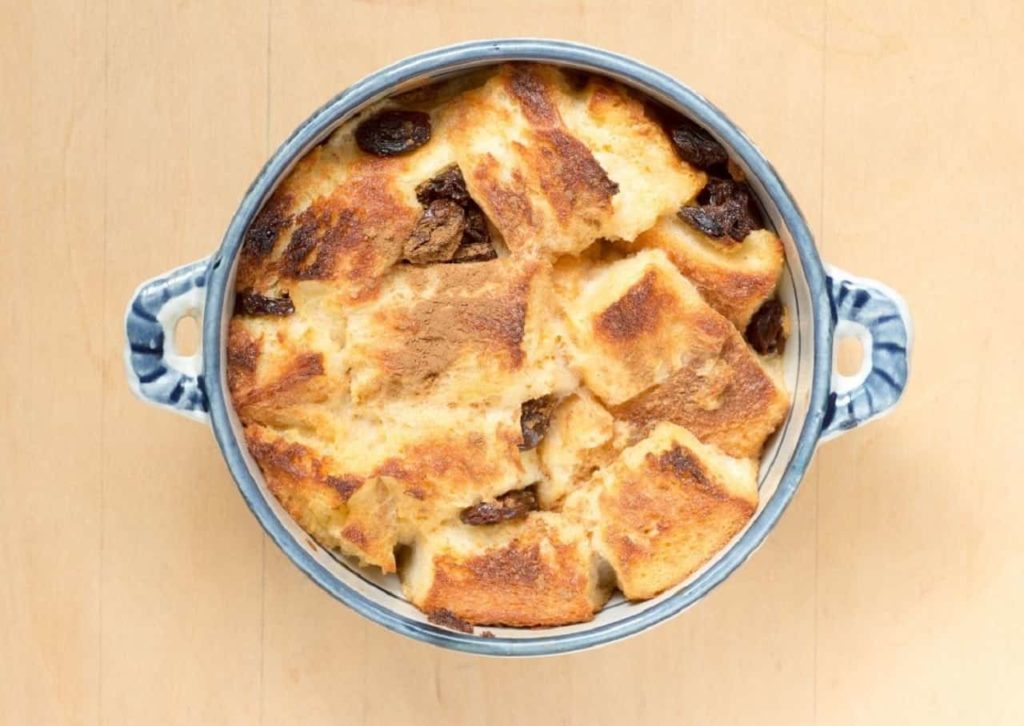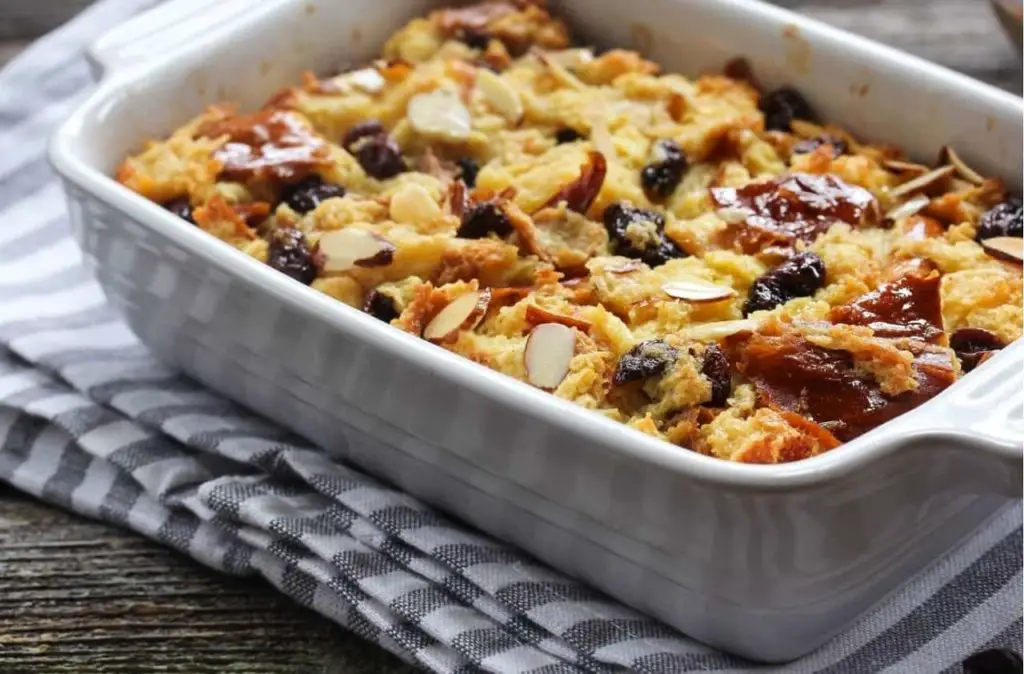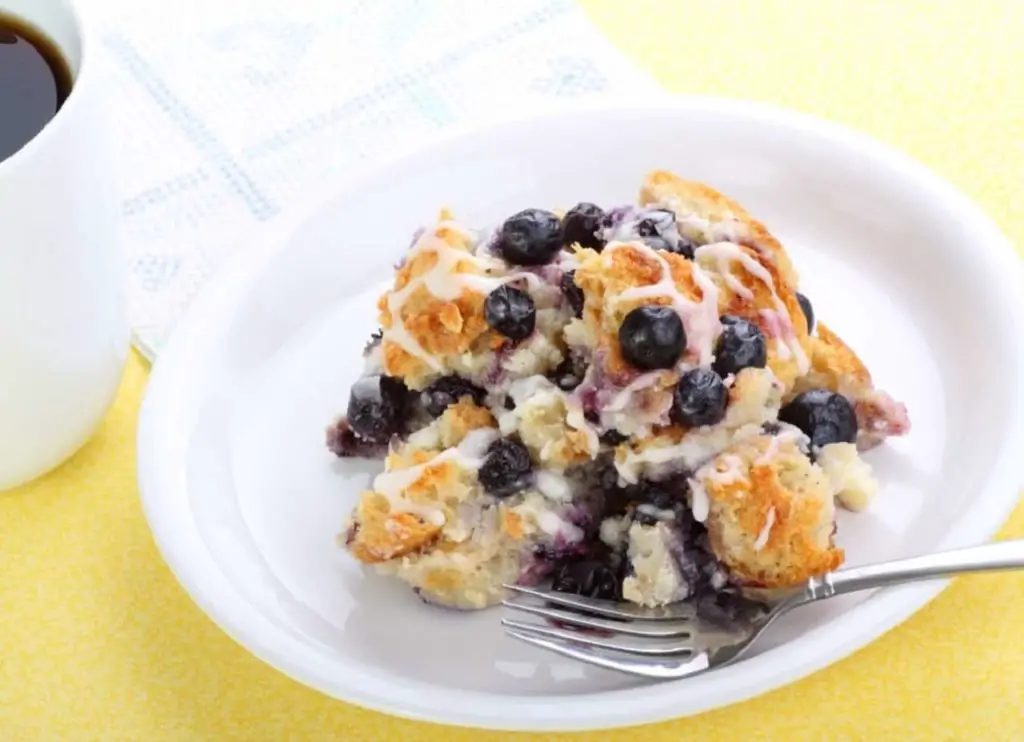Bread pudding is a comforting and satisfying dessert, a reminder of home and good food. It’s easy to make, and thankfully, it’s not difficult to freeze. That doesn’t mean that it freezes perfectly, however.
Whether you should freeze bread pudding divides many opinions, and it’s not just based on personal preference.
Exactly what changes will occur during the freezing and thawing process depends on the ingredients within the bread pudding, if there are any toppings, and how fresh it is when you freeze it, and how long you leave it in the freezer.

Should You Freeze Bread Pudding?
Bread pudding naturally contains a lot of dairy products like butter, and because they are high in moisture, this affects the way bread pudding freezes.
Let’s talk about the changes you may notice between thawed and fresh bread pudding.
When you take it out of the freezer, you’ll see that the surface of the pudding will be peppered with ice crystals, and this is also true of the bottom of the pudding. There’s sadly no way to prevent this.
This happens because the freezing process draws out some of the moisture from the pudding, causing it to sit on top and on the bottom of the bread pudding.
The more water content there is to begin with, the more ice will appear, and the wetter it could be once defrosted.
Luckily, you can minimize this, and that’s something we’ll get to in the freezing section, a little further down in the article.
As long as you’re planning on reheating the bread pudding, there’s no reason why you shouldn’t freeze it, as the heat will cause most of the excess moisture to evaporate, reducing the risk of it becoming a soggy mess.
The Shelf Life Of Bread Pudding
Bread pudding will keep on average about 5 days in total, if you keep it in the fridge.
If you want to keep it for longer, freezing it is the only option, and you should aim to use it within 3 months for the best thawed bread pudding possible.
You can leave it in for longer than that, but you may notice some differences in the flavor and the consistency, and it might thaw unevenly. Just don’t forget about it!
How Do You Freeze Bread Pudding?
There’s not a lot of effort involved in freezing bread pudding (see also How To Freeze Pudding), and it makes the end result definitely worthwhile, as it preserves this delicious dessert for much longer than it would normally last.
Here’s how you do it.
How To Prepare Bread Pudding For The Freezer
Let the bread pudding cool before you try to freeze it. If there’s any excess moisture beading on the bottom or the top, mop that up first with a few paper towels.
Portion the bread pudding as you prefer. The more you separate it, the easier it will be to defrost, and you won’t have to use the whole lot at once. It will also make the thawing time a little quicker.
Before putting it in the freezer, it’s worth wrapping the portions in cling film or foil. Then put the slices into a freezer bag, or an airtight container.
If you’re worried about other food crushing it, use a rigid container to protect it. Make sure to label it. Even the action of labelling it can help you not to forget about it.
Tips And Tricks To Freeze Bread Pudding Right The First Time

How To Avoid Freezer Burn
Freezer burn is the enemy of storing any food for a reasonable amount of time in the freezer. Freezer burn affects both the consistency and the flavor of any food, causing it to lose quality.
Consider how long you want to store the bread pudding in the freezer for. If you want to freeze it for a longer time, make sure to cover it in more than one airtight layer of foil, cling film, or parchment paper to stop freezer burn from affecting this delicious pudding.
If you’re only looking to store the bread pudding for up to a month or a few weeks, putting the bread pudding in freezer bags or into a container without any extra protection is fine.
They won’t be in the freezer for long enough for freezer burn to noticeably affect the quality of the bread pudding.
If you’re planning on storing it for longer, or you’re not sure when you’ll get to use it, wrapping the bread pudding before you put it into its freezer container makes sense. It does take a little longer, but it’s worth it to preserve the quality of the dessert.
If you’re worried about using more plastic than you need to, you can use foil, or beeswax wrap safely to protect the bread pudding.
Leave Off The Toppings
If you’re someone who likes their bread pudding with more than a few toppings, think about how these might react to the cold temperatures of the freezer.
If you suspect the toppings or accents to your pudding might ruin it, or turn everything soggy, leave them off until you’re ready to dish up the bread pudding.
The toppings may even freeze well, in which case, you do have the problem of reheating it. While toppings or sauces may freeze well, the problem is often in defrosting them.
Take cream, for example. It freezes okay, there will be some separation though. In the case of whipped cream, it freezes perfectly. Do you want to reheat either of those? Probably not.
The best way of freezing bread pudding (see also Can You Freeze Rice Pudding) is to reserve any tasty sauces or toppings until the dish is piping hot and ready to eat.
How To Thaw Frozen Bread Pudding
The only way to defrost bread pudding (see also How To Freeze And Defrost Bread) is to transfer it straight into the fridge. This will take at least 6 hours, because the pudding is dense, and there’s a high moisture content.
It may take longer depending on how much you need to defrost at once. For best results, leave it in the fridge overnight.
If you take it out of the freezer and notice ice crystals lining the bottom of the bread pudding, you may want to defrost it on a plate on some paper towels, so the pudding doesn’t go soggy as it thaws.
To check if the pudding is fully defrosted, put a cake tester through the densest part. If it goes all the way through without any force, it’s fine to eat it as is, or if you want to reheat it.
How To Reheat Defrosted Bread Pudding
While defrosted bread pudding is okay on its own, it’s much nicer reheated, as it really brings out the flavors, and most bread puddings are designed to be served hot.
If you don’t have many portions to reheat, and you don’t have a lot of time, you can put it into the microwave.
If you are reheating a whole bread pudding, or you want to make sure there’s as little texture change as possible, use the oven.
Reheating Thawed Bread Pudding In The Oven
Preheat your oven, setting the temperature to 350°F or 180°C. While it warms, transfer the bread pudding into a lined baking dish, making sure to cover it with foil.
This will stop the dessert from losing too much moisture.
When the oven is up to temperature, pop the bread pudding in there, and depending on how much bread pudding you’re reheating, this could take anywhere from 10 to 20 minutes.
Keep checking it to make sure you don’t leave it in there for too long. If you prefer a crunch to your bread pudding, remove the tin foil from the top when the pudding has around 4 minutes left.
Reheating Thawed Bread Pudding In The Microwave
First, check how moist the bread pudding is. This will determine which level you set the microwave to.
If it seems fairly dry to begin with, put the bread pudding into a microwave-safe bowl with a plate on top, otherwise just use a plate. This will help stop moisture from evaporating out of the pudding.
Set the power to medium, or full if the pudding feels a bit soggy. Set the microwave to reheat and let it do so for about 15 seconds at a time.
Check the bread pudding after every increment, and this will prevent it from turning rubbery.
All that’s left to do is to add your favorite toppings or sauces, and enjoy!

Summary
Bread pudding is an easy dish to make, but you may not always have the time or the energy.
Often, it’s a craving that sneaks up on you, and freezing bread pudding (see also Freezing Banana Pudding) for later is a great way of silencing that voice.
While it does go through some changes in the freezer, notably moisture loss, some texture change, and it can turn soggy if it’s not frozen or defrosted properly.
Provided that you follow these tricks and tips outlined above, there’s no reason why you can’t make a whole batch of bread pudding and freeze it for a later date.
Reheating the bread pudding as well will ensure that any extra moisture from ice crystals will evaporate, and as long as you leave off any toppings until you’re ready to serve, there will hardly be any difference.
It’s especially helpful if you know you have guests coming, and you can take out at least some of the work by making the bread pudding beforehand.
It means you can freeze it, and then take it out of the freezer the night before you want to serve it, knowing that at least part of the prep is already done.
